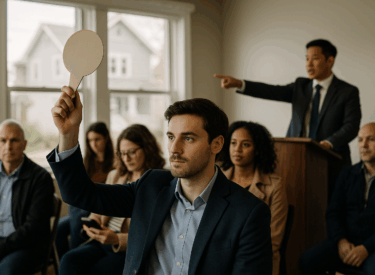If you follow me, you know that one of the most common Growth Habits of self-made millionaires is self-education.
For most of my “millionaires”, the knowledge they acquired came from one habit – Reading to Learn.
Seventy-one percent of the self-made millionaires in my Rich Habits Study, read to learn, a minimum of 30 minutes every day.
It was a habit they forged early in life, long before they became wealthy, and that habit helped them to gain the knowledge they needed in order to succeed.

My millionaires focused their reading on self-help, biographies of successful people, and career-related material.
But, not everybody likes to do their learning by reading alone.
Which brings me to the purpose of this article.
In order to maximize how much you are able to learn and retain, and therefore succeed in life, you need to figure out what type of learner you are.
There are five types of learners:
- Visual Learners
- Auditory Learners
- Reading Learners
- Tactile-Kinetic Learners
- Combination Learners

Visual Learners
Visual Learners retain information best when it is presented to them visually, as in pictures or videos.
The brain thinks in pictures. So, the brain favors Visual Learning.
This is one of the reasons, thanks to recent technological advances, video content is exploding.
For example, do-it-yourself videos are widespread on YouTube.
And those videos receive many hits.
It’s simply easier to watch how to build a shelf than to read about building a shelf.
Watching some expert build a shelf enables individuals to “see” or visualize exactly what to do, which accelerates learning.
Auditory Learners
Auditory Learners retain information best by hearing someone talk.
Listening is convenient and it has the added advantage of leveraging the conscious and subconscious areas of the brain.
You can consciously listen to audio, while unconsciously driving a car, or unconsciously exercising.
This is one of the reasons why podcasts have exploded recently.
Podcasts allow you to learn from experts, while you are engaged in some unconscious activity.

Reading Learners
Reading Learners retain information best through reading.
This is how most individuals were taught to learn.
Reading is still predominant in classrooms, even though it is an inefficient way to learn and even though most people are Visual Learners, Tactile Learners, or a combination of the two.
When you read, your brain must convert the subject matter you are reading, into a picture.
This conversion process is an extra step and, thus, less efficient.
This Classroom preference of forcing students to be Reading Learners is why many students struggle as students.
If a student’s brain is unable to convert the subject matter into a picture, there is no learning.
Tactile-Kinetic Learners
Tactile-Kinetic Learners retain information best by doing.
Doing activates the cerebellum, which is an entirely separate part of the brain responsible for physical movement, or motor activity.
Engaging the cerebellum in any learning activity increases retention because you now have two major brain areas involved in the learning process – the prefrontal cortex and the cerebellum.
For example, Abraham Lincoln was a Tactile-Kinetic Learner.
He would write down his own speeches (Tactile) at least three times prior to giving a speech.
After the third writing session, he would have the speech committed to memory.
When I learned about this Abraham Lincoln Tactile Method of Learning, many years ago, I used it to pass the CPA exam, excel in Grad School, and pass the Certified Financial Planner exam, on the first try.
Try writing down what you want to learn three times.
It really works.

Combination Learners
Combination Learners retain information best by combining two or more methods of learning.
Example of Combination Learning – You want to build a shelf but don’t know how.
So, you watch a YouTube Video (Visual) on how to build a shelf and then proceed to build the shelf (Tactile).
Example of Extreme Combination Learning – Listening to a cooking podcast (Auditory), writing down a particular recipe (Tactile), and then later on using the written down recipe to cook something (Tactile).
The more learning methods you are able to combine, the better your retention will be, the more knowledge/skills you’ll be able to acquire and the better your odds will be to succeed and become wealthy.
So, which type of learner are you?















